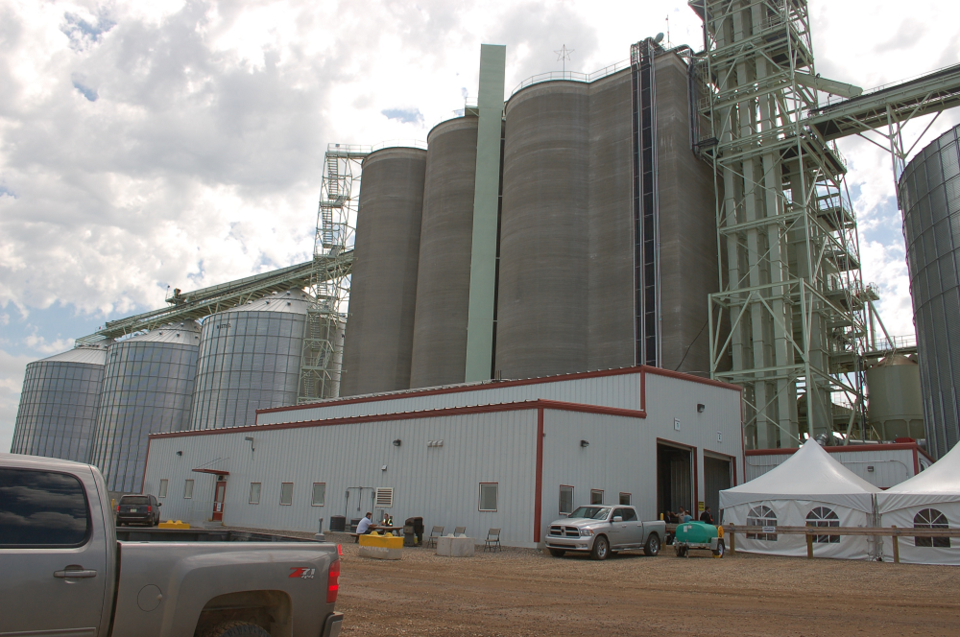With a storage capacity of 2.7 million bushels, the mammoth commodity terminal located right at the Canadian – United States border point at Northgate, was given an official launching by Ceres Global Ag. Corp. on July 20.
Over 400 guests made their way to this southern Saskatchewan outpost to join the 20 or more terminal employees and their corporate president Robert Day, who was just recently installed in the lead position following the retirement of former CEO Patrick Bracken.
A big barbecue proceeded the official launching ceremonies where guests heard encouraging words regarding grain hauling with a new perspective from Jason Labossiere, the grain origination manager at Northgate, from Day and Barbara Haertling, general director of wheat movement for the Burlington Northern Santa Fe Railroad (BNSF), the American-based carrier that is exclusively serving the Northgate hub.
Ceres has not just confined itself to grain movement since it includes the importation of fertilizer from American distributors and is currently shipping between 150 and 180 carloads of propane south to American markets from Canadian suppliers.
On the grain side, the terminal staff is now sending more than 400 carloads of grain south every month to markets that extend not only to mid-western, eastern and pacific northwest markets in the United States, but also on to Mexico and to tidewater ports for shipment to European buyers.
“Construction was officially completed at the end of May this year,” said Labossiere, who came to the company via a family farming operation in Manitoba.
The commodities hub also has the capabilities of transloading crude oil onto railcars for delivery to southern markets and tidewater, but that capacity will only be ramped up once a more complete recovery is signalled for the oilpatch. A parallel set of rail tracks are already in place and the oil transloading facility is in full operational mode.
The double driveway and export cleaning capabilities are attracting producer/customer attention in the local region, said Labossiere.
So far the hub has been handling durum, oats, canola, spring wheat, rye, flax and yellow peas (bulk) from regional producers.
Stevyn Arnt, senior strategic lead for value-added agriculture for the Ministry of the Economy, was also in attendance and brought greetings from that ministry. Barbara Haertling, BNSF’s general director for wheat, also brought greetings from that corporation and provided updated information regarding future services.
More information regarding the opening will be included in the Aug. 19 issue of Agri News, a feature addition to Southeast Lifestyles publication.




